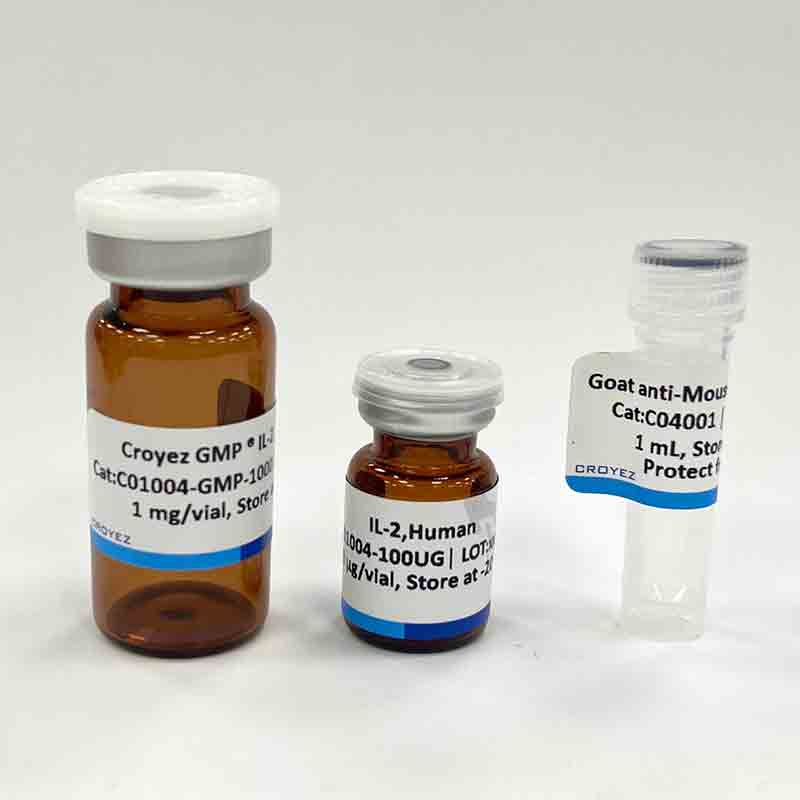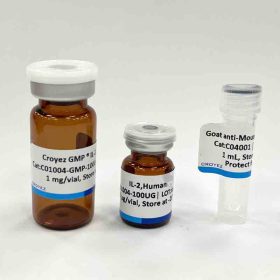CXCL11 has functional and structural relationship with CXCL9 and CXCL10. This CXC chemokine lacks a ELR (Glutamate-Leucine-Arginine) tripeptide motif.. Similar to CXCL9 and CXCL10, CXCL11 can specifically bind to the G protein-coupled receptor CXCR3 and involve in chemotaxis of immune cells and angiogenesis. Expression of both CXCR3 and CXCL11 by The Th1-associated cytokine IFNγ can express both CXCR3 and CXCL11 and create an amplification loop of cell-mediated immune response between Th1 cells.
Sequence:
FLMFKQGRCLCIGPGMKAVKMAEIEKASVIYPSNGCDKVEVIVTMKAHKRQRCLDPRSKQARLIMQAIEKKNFLRRQNM with polyhistidine tag at the N-terminus
Source:
Escherichia coli
Endotoxin Test:
<0.1 EU per 1 μg of the protein by the LAL method.
Activity:
Measure by its ability to chemoattract BaF3 cells transfected with human CXCR3. The ED50 for this effect is <10 ng/mL.
Purity:
>98% as determined by SDS-PAGE. Ni-NTA chromatography
Formulation:
The protein was lyophilized from a solution containing 1X PBS, pH 7.4.
Reconstitution:
It is recommended to reconstitute the lyophilized protein in sterile H2O to a concentration not less than 100 μg/mL and incubate the stock solution for at least 20 min to ensure sufficient re-dissolved.
Storage:
Lyophilized protein should be stored at -20°C. Upon reconstitution, protein aliquots should be stored at -20°C or -80°C.
Note:
Please use within one month after protein reconstitution.





